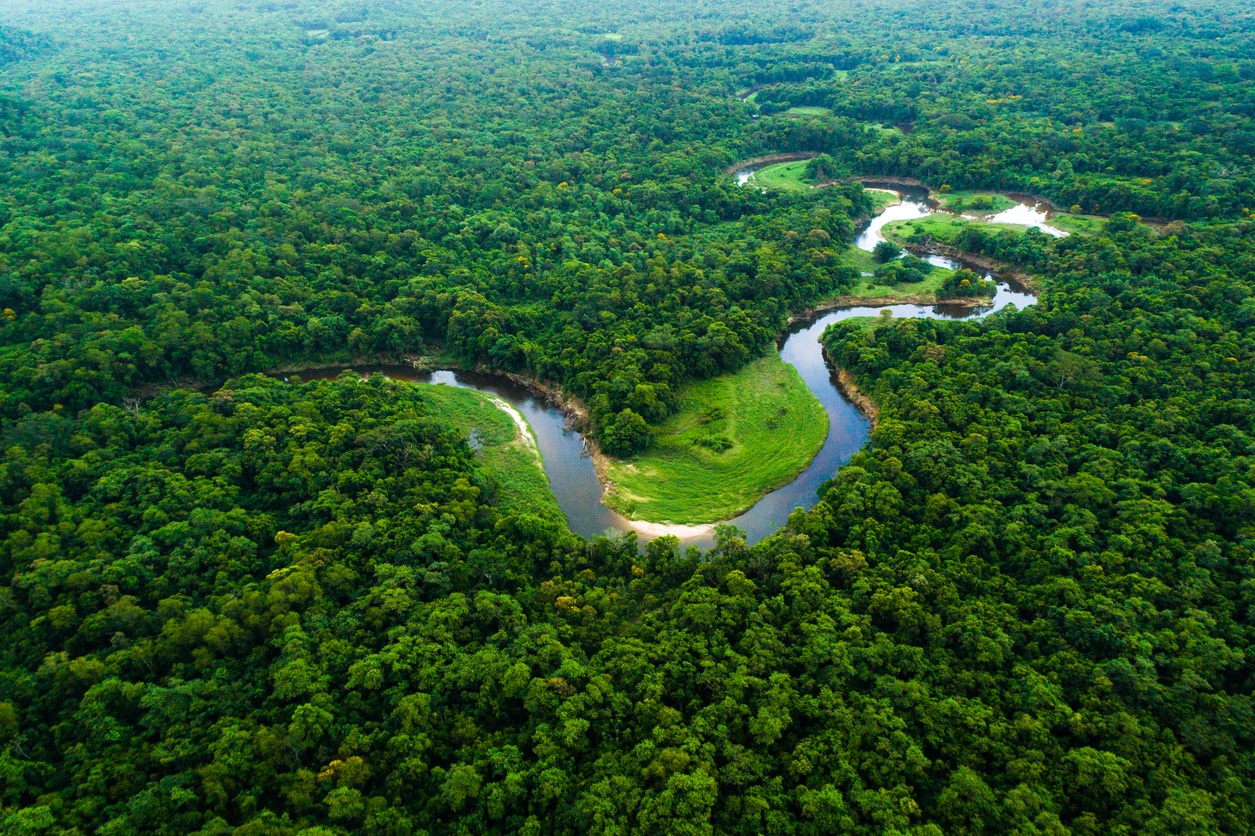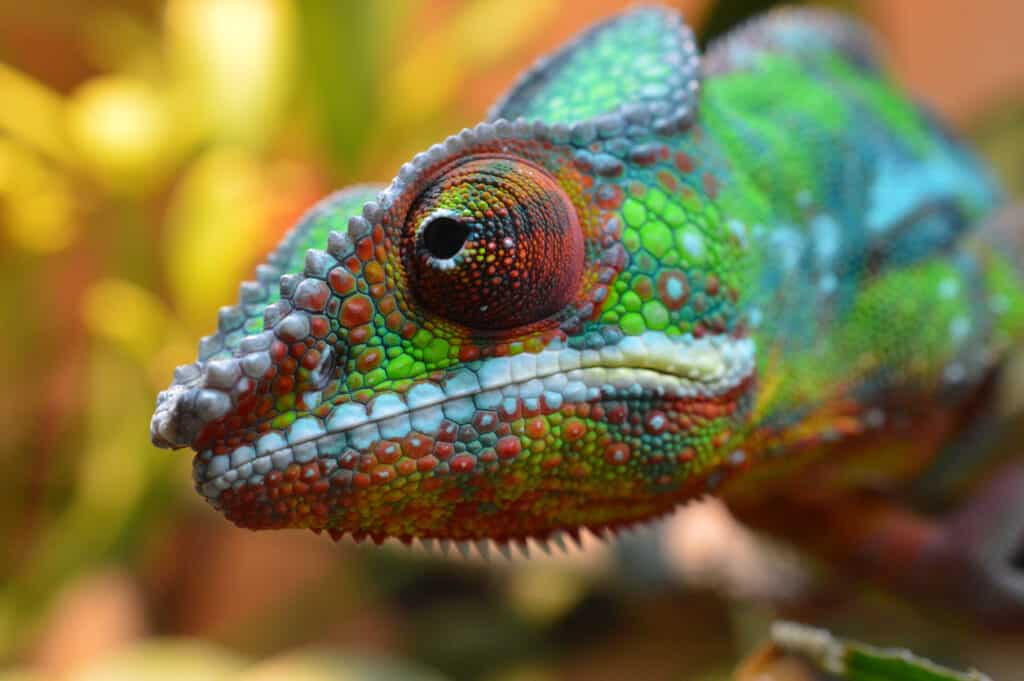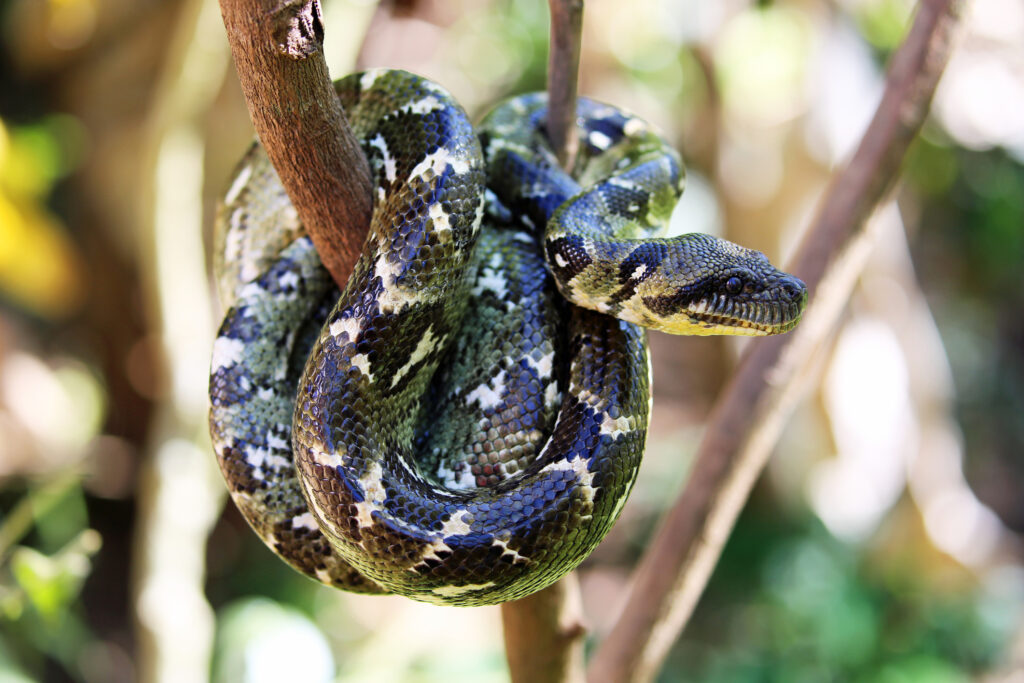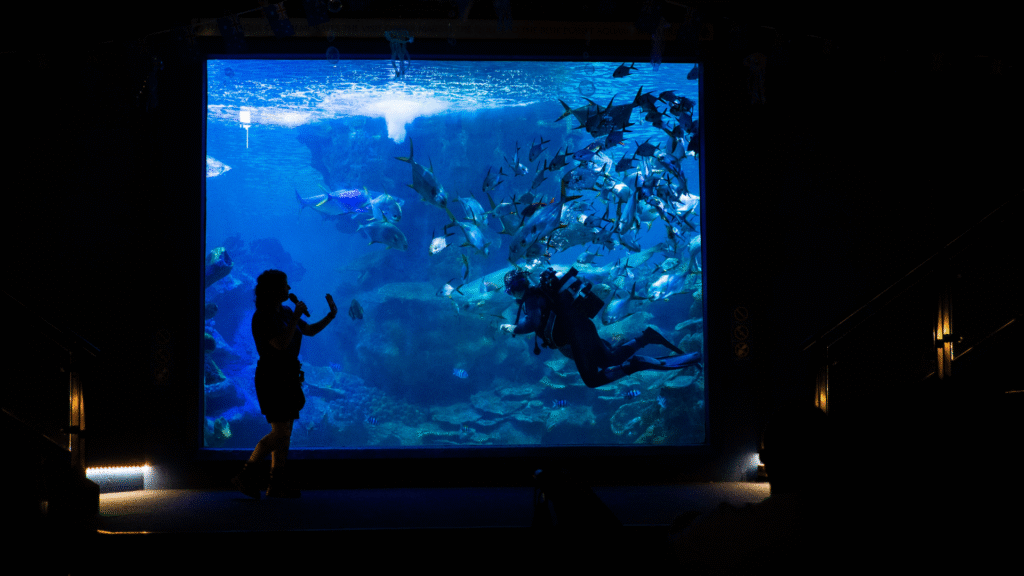5 Fascinating Fish You’ll Find in the Amazon River
The Amazon needs no introduction. Revered for its precious flora and fauna, this invaluable land is home to up to 30% of all species on Earth.
Often when nature programmes showcase the wild beauty of the Amazon, they prioritize its rainforests over its rivers. But the region’s waterways teem with as much life as its forest canopy, with countless creatures to be found beneath the surface.
With that in mind, this guide will take a look at5fascinating fish you’ll find in the Amazon Delta – from the bleeding heart tetra (Hyphessobrycon erythrostigma) to the red-bellied piranha (Pygocentrus nattereri). Plus, we’ll also share some interesting facts and stats about the Amazon itself, so you can get better acquainted with this vast and irreplaceable habitat.
5 Facts about the Amazon River
The Amazon River is the lifeblood of South America. Stretching from its headwaters in Peru all the way to the Atlantic seaboard in Brazil, the river covers an impressive 4,000 miles, taking in Ecuador, Colombia, Venezuela, and Bolivia along the way.
To give you an idea of why the Amazon River is so diverse and teeming with life, here are some of the essential facts you need to know about this iconic waterway.
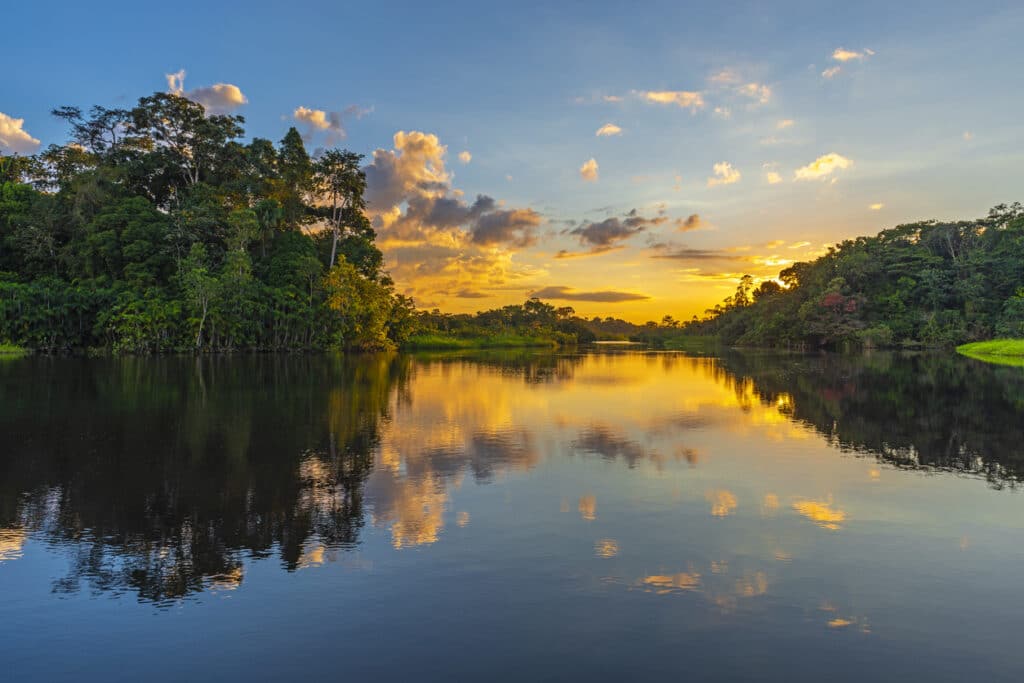
1. The Amazon River is the largest river in the world by output
It may not be the longest river in the world (that’s the Nile), but the Amazon moves the most water from source to sea. Remarkably, it’s estimated that the Amazon releases over 200,000 litres of water into the Atlantic Ocean every second – enough to fill an Olympic-sized swimming pool in 10 seconds flat.
2. The actual source of the Amazon River is still disputed
That’s right – despite being the most famous and widely studied river on Earth, scientists still can’t agree on where the Amazon River starts. Our best guess is the Mantaro River, high in the Peruvian Andes, though we can’t confirm the official location of the river’s source with any great certainty. This is because the Amazon River isn’t considered to have one head source, but a number of headstream areas.
3. Up to 30% of all animal species on Earth live in or near the Amazon River
Isn’t that something? Such are the life-giving properties of the Amazon River that the area that encompasses the River and rainforest is thought to be home to up to 30% of all plant and animal species on our planet. To put this into context, the Amazon Delta is one million square miles, while the entire world is around 197 million square miles. That’s a lot of life squeezed into one relatively small area.
4. Around 20% of all the world’s freshwater comes from the Amazon
Here are some mind-boggling stats for you: while 97% of all the world’s water is saltwater found in seas and oceans, 3% is freshwater stored in rivers and lakes. And of this freshwater, over 20% comes from the Amazon. This is made even more remarkable when you consider that there are over 150,000 rivers in the world, along with over 307 million lakes.
No wonder the Amazon is home to more freshwater fish species than any other body of water on Earth.
5. There are no permanent bridges over the Amazon River
Incredible, right? At no point along the length of the Amazon is there a permanent bridge to get from one side to the other; it’s simply too big and too remote to justify the building of one. Instead, locals rely on boats to navigate the river’s network of waterways and channels.
Which fish live in the Amazon River?
Perhaps a more apt question would be, which fish don’t live in the Amazon River? After all, biologists believe that this famous waterway is home to over 3,000 unique species of freshwater fish, which equates to around 15% of the global population.
Of course, we can’t profile quite that many species in a single blog post (we’d be here rather a long time). So, we’ve cherry picked five of our favourite Amazon-dwelling fish for you to learn about, some of which are on display in the Flooded Forest exhibit here at Blue Planet Aquarium.
Download our activity sheet for use in the aquarium, as you walk through our exhibits and find as many of the species as possible!
1. Red-bellied piranha (Pygocentrus nattereri)
You’ve seen the films and read the stories, but the truth is that the Amazon’s native Red-bellied piranha has done little to earn its reputation as a ferocious killer – quite the opposite, in fact.
Instead, this carnivorous fish is actually very docile, choosing to live in huge shoals so as not to become easy prey for predators. They’re also very beautiful, with glittering scales and a distinctive red underbelly, which is where their name is derived from.
Here at Blue Planet Aquarium, we have our own shoal of red-bellied piranha, which you can see first-hand in the Flooded Forest.
2. Bleeding heart tetra (Hyphessobrycon erythrostigma)
The bleeding heart tetra is one of several freshwater tropical fish that calls the Amazon home. Native to the Upper Amazon basin, including the river’s tributaries which wind through Ecuador, Bolivia, and Peru; the bleeding heart tetra is easily identified by the distinctive red mark on the centre of its chest, which, as you might have guessed, gives the fish its rather impressive name.
3. Silver arowana (Osteoglossum bicirrhosum)
Not only can the Amazon’s silver arowana fish grow up to an impressive one metre in length, but it also has a serious party trick up its sleeve. The silver arowana is an impressive ambush predator that also has upward-facing eyes, so it can engulf food the second it touches the water’s surface! This sleek, bony fish is capable of catapulting itself out of the water to catch its prey, and there’s plenty on the menu – from crabs and spiders to crustaceans, flying insects, and any other small-ish critters unfortunate enough to be in this opportunistic hunter’s eyeline.
And here’s another fun fact for you: silver arowana are often called “dragon fish” due to their shining scales and double barbels, which are reminiscent of the dragons depicted in folklore.
4. Xingu River stingray (Potamotrygon leopoldi)
With its distinctive polka-dot markings, the Xingu River stingray shares as many similarities with Disney cartoon characters as it does with other rays and skates. Endemic to the Xingu River, the main southeast tributary of the Amazon, Potamotrygon leopoldi are skilled predators with a voracious appetite, with mature animals observed to eat three or more times a day.
The Xingu River stingray uses its powerful jaws to catch and eat its prey.
5. Black pacu (Colossoma macropomum)
The famous black pacu of the Amazon Delta have “Colossoma” in their scientific name for a reason. Growing over one metre in length and weighing in at over 40kg, these are the largest characin fish found in the Americas, and one of the heaviest freshwater fish in the Amazon River.
Despite their fearsome size and weight, black pacu are fruit eaters, devouring fruits, seeds, herbs and other flora that drop onto the water’s surface. Still, we wouldn’t want to be on the receiving end of a pacu bite – their jaws are thought to have enough crushing power to crack a Brazil nut!
We hope you’ve enjoyed this whistle-stop look at some of the most impressive species to be found in the mighty Amazon River. To learn more about freshwater and tropical fish species found in the Amazon, our Flooded Forest exhibit contains some of the river’s most esteemed residents. Book your tickets to Blue Planet Aquarium today.
